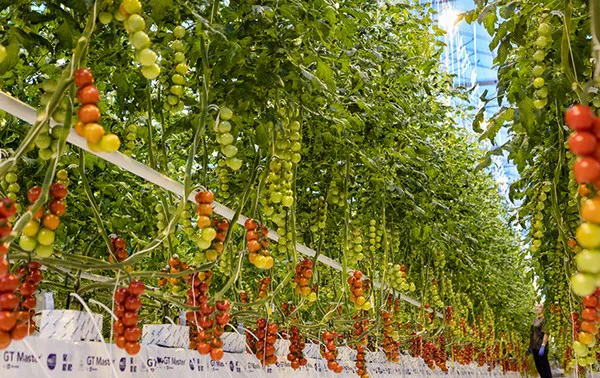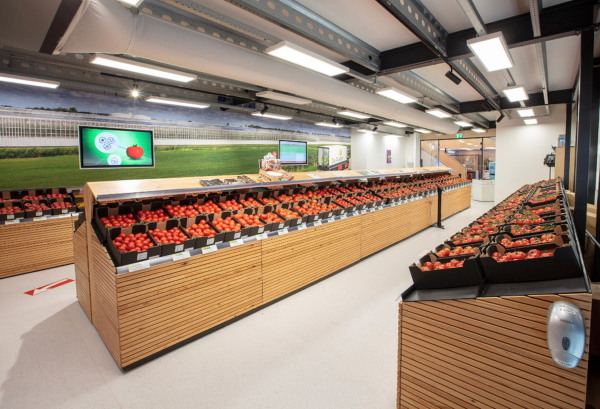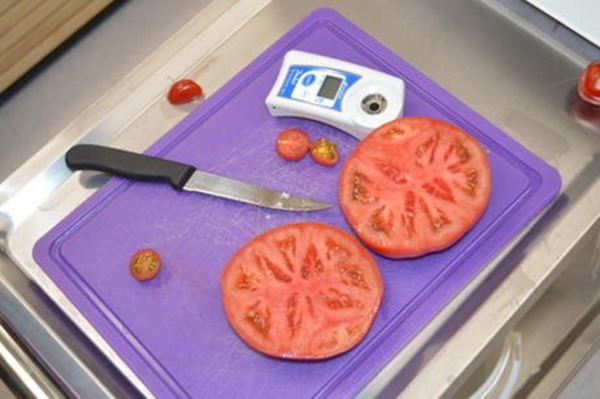Although there are differences between the European and the American glasshouse industry, with one focusing more on the retail market and the other one traditionally being focused on the foodservice, opportunities for glasshouse growers abound, says Inci Dannenberg, the new Global Head of Vegetable Seeds at Bayer. The company invests heavily in technology to help growers emphasize these opportunities.

As the new Global Head of Vegetable Seeds with Bayer, with decades of commercial achievement at Bayer, Inci Dannenberg can only describe current times as exciting. “The UN has declared this year as the International year of Fruits and Vegetables, as fruits and vegetables play a key role in nutrition. Our over-arching vision within Bayer is “Health for All, Hunger for None”. We’re using our breath of technology and innovation to globally help bring health & nutrition in a sustainable way that can support the whole vegetable value chain,” she says.
“Now that we’re facing a pandemic, we’ve seen a growing trend in the marketplace for nutrition. More than ever, people are looking at their own health and food pattern, concerns that they have never had before,” Inci explains. This provides opportunities for the fresh produce chain, she adds. “Growers have the opportunity to produce fruits and vegetables that address these nutritional demands and health needs. But it’s not only about what’s in their produce, it also has to be appealing. To ensure that it becomes part of their diet, consumers have to enjoy eating it.”
Consumer trends
And there are more consumer trends to be aware of. “The acceptance of technology has become more rapid due to the pandemic. Fresh produce is still a product that people want to see or feel before buying, yet there’s a growing comfort level in shopping online. Then there are retailers that have started looking at their SKU (stock-keeping unit, the different products on their shelves) and the options they provide, making decisions to improve their efficiency. Those results are driving the trades and their characteristics: will they focus on unique spaces or on aggregated commodities and average products? Where those volumes are diversifying in and what happens to the middle ground, is something that we’re monitoring, which eventually will also affect what types of vegetable varieties we’re developing.”
For Bayer as a breeding company, this means focusing on the correct balance of characteristics. “We have to balance the consumers’ requirements to engage with fruits and vegetables with the growers’ needs for agronomics, business goals, and sustainability. And then there’s the challenge for shelf life, answering the retailer’s demands,” she sums up. “Balancing all those characteristics requires a focus on innovation. Technology can help us in decision making, and so on. We’re providing tailored solutions to address this.”


Photos of the De Ruiter Experience Centre in Bleiswijk
Innovation and R&D
An example of their activities and their focus is the expansion of the Bayer global product design centrum in San Nicolas, Almeria, Spain. The fold expansion includes multifunction R&D facilities, laboratories, cell culture rooms, climate-controlled chambers, and new phytotrons. “Within R&D, innovation is important. The use of double haploid technology will enable us to solve challenges faster and speed up our breeding line development by 1.5-2 years to bring seeds and solutions more quickly to growers.”
Also further down the fresh produce chain, the company invests in modern techniques. “At the De Ruiter Experience Center in Bleiswijk we’re launching forward farms to showcase growers’ actual production practices using sustainable techniques. As one of Bayer’s newest Forward Farming sites, this is where we educate partners, growers, students and plant raisers. We bring industry partners, either physically or digitally, such as traders and retailers there, but we also host stakeholders and policymakers at these farms so they can really see and experience what horticulture is about.”

Even though it’s hard to predict where the industry is going, with these activities Bayer continues focusing on being a trusted partner for growers: offering them what the market needs, understanding deeply the chain from grower to consumer. “Keeping an eye on that ball will be paramount for us,” she says. “The glasshouse industry is a rapidly growing segment in the US, and although it’s much more established in Europe thanks to a more local connection with retail, there are significant technological opportunities. The US traditionally had focused on hospitality and the food service more, resulting in a strongly growing glasshouse market in the US now. China is growing rapidly as well,” Inci says. “However, rather than focusing on a crop or geography, our company focuses on the customer segments: the protected cultivation, the smallholder farms, the processing segment, and the open field professionals,” she sums up. “When we look at the glasshouses, we’re looking at them all around the world and inspire leverage learning as we go into developing markets from other markets.”
Technology and data are key in monitoring this and therefore it’s no wonder the Bayer team invests heavily in them. And not just to research market opportunities or develop new varieties, but also to help growers make the most out of them. Last year, a collaboration was announced with Prospera, an AI data analytics company specializing in machine learning. Since then, there have been pilots in Mexican greenhouses to help growers look at opportunities to improve in terms of water and fertilization use, production characteristics, and constant output. The partnership was announced as Bayer’s first step into solutions beyond the seed for the vegetable greenhouse market. “We’ve invested in utilizing digital and data analytics to address the unique needs specifically for growers.”
 Bayer
Bayer
